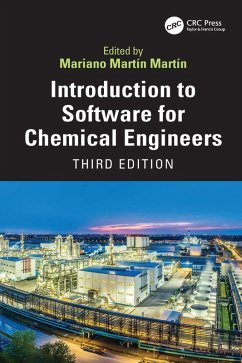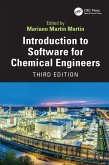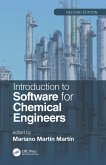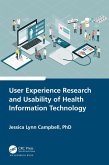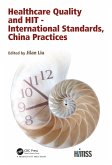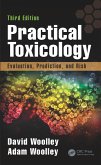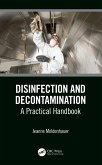Introduction to Software for Chemical Engineers (eBook, ePUB)
Redaktion: Martín, Mariano Martín
187,95 €
187,95 €
inkl. MwSt.
Erscheint vor. 24.03.25

94 °P sammeln
187,95 €
Als Download kaufen

187,95 €
inkl. MwSt.
Erscheint vor. 24.03.25

94 °P sammeln
Jetzt verschenken
Alle Infos zum eBook verschenken
187,95 €
inkl. MwSt.
Erscheint vor. 24.03.25
Alle Infos zum eBook verschenken

94 °P sammeln
Unser Service für Vorbesteller - Ihr Vorteil ohne Risiko:
Sollten wir den Preis dieses Artikels vor dem Erscheinungsdatum senken, werden wir Ihnen den Artikel bei der Auslieferung automatisch zum günstigeren Preis berechnen.
Sollten wir den Preis dieses Artikels vor dem Erscheinungsdatum senken, werden wir Ihnen den Artikel bei der Auslieferung automatisch zum günstigeren Preis berechnen.
Introduction to Software for Chemical Engineers (eBook, ePUB)
Redaktion: Martín, Mariano Martín
- Format: ePub
- Merkliste
- Auf die Merkliste
- Bewerten Bewerten
- Teilen
- Produkt teilen
- Produkterinnerung
- Produkterinnerung

Bitte loggen Sie sich zunächst in Ihr Kundenkonto ein oder registrieren Sie sich bei
bücher.de, um das eBook-Abo tolino select nutzen zu können.
Hier können Sie sich einloggen
Hier können Sie sich einloggen
Sie sind bereits eingeloggt. Klicken Sie auf 2. tolino select Abo, um fortzufahren.

Bitte loggen Sie sich zunächst in Ihr Kundenkonto ein oder registrieren Sie sich bei bücher.de, um das eBook-Abo tolino select nutzen zu können.
Introduction to Software for Chemical Engineers, Third Edition is a quick guide to using various computer packages for Chemical Engineering applications. It covers a range of software applications, general mathematical packages, process simulators, equation-based modeling languages, optimization software, and specialized software.
- Geräte: eReader
- mit Kopierschutz
- eBook Hilfe
- Größe: 54.87MB
Andere Kunden interessierten sich auch für
![Introduction to Software for Chemical Engineers, Second Edition (eBook, ePUB) Introduction to Software for Chemical Engineers, Second Edition (eBook, ePUB)]() Introduction to Software for Chemical Engineers, Second Edition (eBook, ePUB)92,95 €
Introduction to Software for Chemical Engineers, Second Edition (eBook, ePUB)92,95 €![Introduction to Software for Chemical Engineers (eBook, PDF) Introduction to Software for Chemical Engineers (eBook, PDF)]() Introduction to Software for Chemical Engineers (eBook, PDF)187,95 €
Introduction to Software for Chemical Engineers (eBook, PDF)187,95 €![Introduction to Software for Chemical Engineers, Second Edition (eBook, PDF) Introduction to Software for Chemical Engineers, Second Edition (eBook, PDF)]() Introduction to Software for Chemical Engineers, Second Edition (eBook, PDF)92,95 €
Introduction to Software for Chemical Engineers, Second Edition (eBook, PDF)92,95 €![User Experience Research and Usability of Health Information Technology (eBook, ePUB) User Experience Research and Usability of Health Information Technology (eBook, ePUB)]() Jessica Lynn CampbellUser Experience Research and Usability of Health Information Technology (eBook, ePUB)54,95 €
Jessica Lynn CampbellUser Experience Research and Usability of Health Information Technology (eBook, ePUB)54,95 €![Healthcare Quality and HIT - International Standards, China Practices (eBook, ePUB) Healthcare Quality and HIT - International Standards, China Practices (eBook, ePUB)]() Healthcare Quality and HIT - International Standards, China Practices (eBook, ePUB)37,95 €
Healthcare Quality and HIT - International Standards, China Practices (eBook, ePUB)37,95 €![Practical Toxicology (eBook, ePUB) Practical Toxicology (eBook, ePUB)]() David WoolleyPractical Toxicology (eBook, ePUB)83,95 €
David WoolleyPractical Toxicology (eBook, ePUB)83,95 €![Disinfection and Decontamination (eBook, ePUB) Disinfection and Decontamination (eBook, ePUB)]() Jeanne MoldenhauerDisinfection and Decontamination (eBook, ePUB)52,95 €
Jeanne MoldenhauerDisinfection and Decontamination (eBook, ePUB)52,95 €-
-
-
Introduction to Software for Chemical Engineers, Third Edition is a quick guide to using various computer packages for Chemical Engineering applications. It covers a range of software applications, general mathematical packages, process simulators, equation-based modeling languages, optimization software, and specialized software.
Dieser Download kann aus rechtlichen Gründen nur mit Rechnungsadresse in A, B, BG, CY, CZ, D, DK, EW, E, FIN, F, GR, HR, H, IRL, I, LT, L, LR, M, NL, PL, P, R, S, SLO, SK ausgeliefert werden.
Produktdetails
- Produktdetails
- Verlag: Taylor & Francis eBooks
- Erscheinungstermin: 24. März 2025
- Englisch
- ISBN-13: 9781040298831
- Artikelnr.: 73312396
- Verlag: Taylor & Francis eBooks
- Erscheinungstermin: 24. März 2025
- Englisch
- ISBN-13: 9781040298831
- Artikelnr.: 73312396
- Herstellerkennzeichnung Die Herstellerinformationen sind derzeit nicht verfügbar.
Mariano Martín Martín is Full Professor of Chemical Engineering at the University of Salamanca and the leader of its Sustainable Processes and Products Lab. He graduated cum laude in an integrated program (BSc+MEng), and acquired a PhD in chemical engineering from the same university. Prof. Martín previously worked as a postdoctoral engineer at Procter & Gamble, where he received the P&G Award for his outstanding contributions to modeling and simulation, and as a Fulbright Postdoctoral Fellow at Carnegie Mellon University. Prof. Martín has been a visiting professor at the University of Wisconsin Madison, CMU, Texas A&M, University of Leeds, University of Birmingham, Plapiqui, Udelar, Universidad de Guanajuato, UNAL, and University of Maribor, among others. He has published over 190 papers, has an h-index of 42 (Scopus), and has edited five other books.
Front Matter. Part I. Modeling and Simulation in the Chemical Engineering
CV and Its Application to Industry. 1. Modeling, Simulation and
Optimization in the Chemical Engineering Curriculum. 2. Modeling,
Simulation and Optimization in the Process and Commodities Industries. Part
II. General Tools. 3. Excel for Chemical Engineering. 4. MATLAB® for
Chemical Engineering. 5. PTC Mathcad for Chemical Engineering. 6. Python
and Pyomo for Chemical Engineering. 7. Data Analysis for Chemical
Engineers: Introduction to R. 8. Minitab for Chemical Engineering. 9.
Statistical Analysis with SPSS for Chemical Engineering. Part III. Detailed
Equipment Design and Analysis. 10. Computational Fluid Dynamics and
Multiphysics. 11. Discrete Element Method Applications in Process
Engineering. Part IV. Process Simulation. 12. Process Flowsheeting in
Chemical Engineering. 13. Introduction to gPROMS for Chemical Engineering.
14. EES for Chemical Engineering. 15. Modular Process Simulators. 16. Life
Cycle Assessment in Chemical Processes: Introduction to SimaPro. Part V.
Process Design and Optimization. 17. Algebraic Modeling and Optimization.
18. Use of GAMS for Optimal Process Synthesis and Operation. 19. AIMMS for
Scheduling of Chemical Plants. 20. Plant Location: Supply Chain Management.
21. Dynamics Optimization in Process Systems. 22. Optimization in Chemical
and Biological Engineering Using Julia. 23. Fast Deployment of Optimization
Applications Using SolverStudio. 24. Use of Lingo for Product Design. 25.
Control Station for Chemical Engineering: LOOP PRO.
CV and Its Application to Industry. 1. Modeling, Simulation and
Optimization in the Chemical Engineering Curriculum. 2. Modeling,
Simulation and Optimization in the Process and Commodities Industries. Part
II. General Tools. 3. Excel for Chemical Engineering. 4. MATLAB® for
Chemical Engineering. 5. PTC Mathcad for Chemical Engineering. 6. Python
and Pyomo for Chemical Engineering. 7. Data Analysis for Chemical
Engineers: Introduction to R. 8. Minitab for Chemical Engineering. 9.
Statistical Analysis with SPSS for Chemical Engineering. Part III. Detailed
Equipment Design and Analysis. 10. Computational Fluid Dynamics and
Multiphysics. 11. Discrete Element Method Applications in Process
Engineering. Part IV. Process Simulation. 12. Process Flowsheeting in
Chemical Engineering. 13. Introduction to gPROMS for Chemical Engineering.
14. EES for Chemical Engineering. 15. Modular Process Simulators. 16. Life
Cycle Assessment in Chemical Processes: Introduction to SimaPro. Part V.
Process Design and Optimization. 17. Algebraic Modeling and Optimization.
18. Use of GAMS for Optimal Process Synthesis and Operation. 19. AIMMS for
Scheduling of Chemical Plants. 20. Plant Location: Supply Chain Management.
21. Dynamics Optimization in Process Systems. 22. Optimization in Chemical
and Biological Engineering Using Julia. 23. Fast Deployment of Optimization
Applications Using SolverStudio. 24. Use of Lingo for Product Design. 25.
Control Station for Chemical Engineering: LOOP PRO.
Front Matter. Part I. Modeling and Simulation in the Chemical Engineering
CV and Its Application to Industry. 1. Modeling, Simulation and
Optimization in the Chemical Engineering Curriculum. 2. Modeling,
Simulation and Optimization in the Process and Commodities Industries. Part
II. General Tools. 3. Excel for Chemical Engineering. 4. MATLAB® for
Chemical Engineering. 5. PTC Mathcad for Chemical Engineering. 6. Python
and Pyomo for Chemical Engineering. 7. Data Analysis for Chemical
Engineers: Introduction to R. 8. Minitab for Chemical Engineering. 9.
Statistical Analysis with SPSS for Chemical Engineering. Part III. Detailed
Equipment Design and Analysis. 10. Computational Fluid Dynamics and
Multiphysics. 11. Discrete Element Method Applications in Process
Engineering. Part IV. Process Simulation. 12. Process Flowsheeting in
Chemical Engineering. 13. Introduction to gPROMS for Chemical Engineering.
14. EES for Chemical Engineering. 15. Modular Process Simulators. 16. Life
Cycle Assessment in Chemical Processes: Introduction to SimaPro. Part V.
Process Design and Optimization. 17. Algebraic Modeling and Optimization.
18. Use of GAMS for Optimal Process Synthesis and Operation. 19. AIMMS for
Scheduling of Chemical Plants. 20. Plant Location: Supply Chain Management.
21. Dynamics Optimization in Process Systems. 22. Optimization in Chemical
and Biological Engineering Using Julia. 23. Fast Deployment of Optimization
Applications Using SolverStudio. 24. Use of Lingo for Product Design. 25.
Control Station for Chemical Engineering: LOOP PRO.
CV and Its Application to Industry. 1. Modeling, Simulation and
Optimization in the Chemical Engineering Curriculum. 2. Modeling,
Simulation and Optimization in the Process and Commodities Industries. Part
II. General Tools. 3. Excel for Chemical Engineering. 4. MATLAB® for
Chemical Engineering. 5. PTC Mathcad for Chemical Engineering. 6. Python
and Pyomo for Chemical Engineering. 7. Data Analysis for Chemical
Engineers: Introduction to R. 8. Minitab for Chemical Engineering. 9.
Statistical Analysis with SPSS for Chemical Engineering. Part III. Detailed
Equipment Design and Analysis. 10. Computational Fluid Dynamics and
Multiphysics. 11. Discrete Element Method Applications in Process
Engineering. Part IV. Process Simulation. 12. Process Flowsheeting in
Chemical Engineering. 13. Introduction to gPROMS for Chemical Engineering.
14. EES for Chemical Engineering. 15. Modular Process Simulators. 16. Life
Cycle Assessment in Chemical Processes: Introduction to SimaPro. Part V.
Process Design and Optimization. 17. Algebraic Modeling and Optimization.
18. Use of GAMS for Optimal Process Synthesis and Operation. 19. AIMMS for
Scheduling of Chemical Plants. 20. Plant Location: Supply Chain Management.
21. Dynamics Optimization in Process Systems. 22. Optimization in Chemical
and Biological Engineering Using Julia. 23. Fast Deployment of Optimization
Applications Using SolverStudio. 24. Use of Lingo for Product Design. 25.
Control Station for Chemical Engineering: LOOP PRO.
